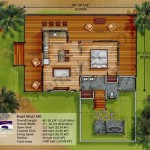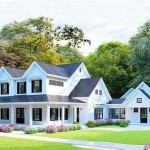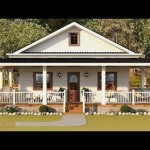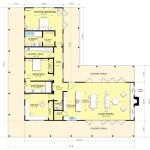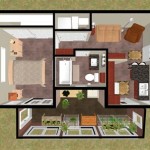Modern transitional house plans are a blend of classic and contemporary architectural styles, combining the timeless appeal of traditional designs with the clean lines and innovative features of modern architecture. These plans strike a balance between the familiar and the fresh, offering homeowners the best of both worlds. Whether you’re seeking a cozy cottage with a modern twist or a sleek and sophisticated suburban home, modern transitional house plans have something for everyone.
For instance, a modern transitional farmhouse plan may incorporate a traditional gabled roof and wraparound porch, while featuring floor-to-ceiling windows, an open floor plan, and a sleek kitchen with high-end appliances. The result is a home that exudes both charm and modernity, appealing to homeowners who appreciate the warmth of traditional design with the functionality and style of contemporary architecture.
In this article, we’ll delve into the key features of modern transitional house plans, explore their benefits and drawbacks, and provide tips for choosing the right plan for your needs. We’ll also showcase some stunning examples of modern transitional homes to inspire your own design journey.
Here are 8 important points to consider about modern transitional house plans:
- Blend of classic and contemporary styles
- Timeless appeal with modern functionality
- Open floor plans and large windows
- Neutral color palettes and natural materials
- Mix of traditional and modern furnishings
- Emphasis on indoor-outdoor living
- Energy efficiency and sustainable features
- Customization options for personal style
These plans offer homeowners the flexibility to create a space that is both stylish and comfortable, meeting the demands of modern living while embracing the charm of traditional design.
Blend of classic and contemporary styles
Modern transitional house plans seamlessly merge elements of classic and contemporary architecture to create a timeless and sophisticated aesthetic. This blend of styles allows homeowners to enjoy the best of both worlds, combining the enduring charm of traditional design with the clean lines and innovative features of modern architecture.
- Preservation of classic elements
Modern transitional house plans often retain classic elements such as gabled roofs, symmetrical facades, and decorative moldings. These elements lend a sense of warmth and familiarity to the home, creating a welcoming and inviting atmosphere.
- Incorporation of modern features
At the same time, modern transitional house plans embrace modern features such as open floor plans, floor-to-ceiling windows, and sleek kitchens. These elements bring a sense of light, airiness, and functionality to the home, making it perfect for contemporary living.
- Balanced proportions and clean lines
Modern transitional house plans emphasize balanced proportions and clean lines, creating a sense of order and harmony. The result is a home that is both visually appealing and inviting, with a timeless quality that will endure for years to come.
- Neutral color palettes and natural materials
Modern transitional house plans typically feature neutral color palettes and natural materials, such as wood, stone, and glass. These elements create a warm and inviting atmosphere while providing a backdrop for personal style and dcor.
By blending classic and contemporary styles, modern transitional house plans offer the perfect balance of tradition and innovation, creating homes that are both stylish and comfortable, timeless and modern.
Timeless appeal with modern functionality
Modern transitional house plans offer a timeless appeal that endures through the years, while also incorporating modern functionality to meet the demands of contemporary living. This unique combination ensures that these homes remain stylish and comfortable for generations to come.
Preservation of classic elements
Modern transitional house plans often retain classic elements such as gabled roofs, symmetrical facades, and decorative moldings. These elements lend a sense of warmth and familiarity to the home, creating a welcoming and inviting atmosphere. By incorporating these timeless features, modern transitional homes evoke a sense of nostalgia and tradition, while still maintaining a fresh and updated look.
Integration of modern features
At the same time, modern transitional house plans embrace modern features such as open floor plans, floor-to-ceiling windows, and sleek kitchens. These elements bring a sense of light, airiness, and functionality to the home, making it perfect for contemporary living. Open floor plans allow for seamless flow between spaces, creating a more spacious and inviting environment. Floor-to-ceiling windows maximize natural light and provide stunning views of the outdoors, blurring the lines between indoor and outdoor living.
Balanced proportions and clean lines
Modern transitional house plans emphasize balanced proportions and clean lines, creating a sense of order and harmony. The result is a home that is both visually appealing and inviting, with a timeless quality that will endure for years to come. Symmetrical facades and balanced rooflines create a sense of stability and permanence, while clean lines and uncluttered spaces evoke a sense of modernity and sophistication.
Neutral color palettes and natural materials
Modern transitional house plans typically feature neutral color palettes and natural materials, such as wood, stone, and glass. These elements create a warm and inviting atmosphere while providing a backdrop for personal style and dcor. Neutral colors, such as white, beige, and gray, provide a timeless foundation that can be easily updated with accents and accessories as desired. Natural materials, such as wood and stone, add a touch of warmth and texture, creating a sense of connection to the outdoors.
By combining timeless appeal with modern functionality, modern transitional house plans offer the best of both worlds. These homes exude a sense of warmth, familiarity, and tradition, while also embracing the latest design trends and amenities. As a result, they remain stylish and comfortable for generations to come, providing a perfect balance between the past and the present.
Open floor plans and large windows
Modern transitional house plans often incorporate open floor plans and large windows to create a sense of light, airiness, and spaciousness. These design elements not only enhance the aesthetic appeal of the home but also provide numerous functional benefits.
- Spacious and inviting living areas
Open floor plans eliminate walls and partitions between traditional rooms, such as the living room, dining room, and kitchen. This creates a more spacious and inviting living area that is perfect for entertaining guests, spending time with family, or simply relaxing. The seamless flow between spaces also makes it easier to keep an eye on children or pets while you’re cooking or doing other tasks.
- Abundant natural light
Large windows allow for ample natural light to flood the home, creating a bright and cheerful atmosphere. Natural light not only reduces the need for artificial lighting but also has numerous health benefits, such as improving mood, boosting energy levels, and regulating sleep patterns. Large windows also provide stunning views of the outdoors, bringing the beauty of nature into the home.
- Connection to the outdoors
Open floor plans and large windows help to blur the lines between indoor and outdoor living. By extending the living space to the outdoors through patios, decks, or balconies, homeowners can enjoy the benefits of both indoor and outdoor environments. This connection to nature creates a sense of tranquility and well-being, while also providing opportunities for al fresco dining, entertaining, and relaxation.
- Energy efficiency
Large windows can also contribute to energy efficiency. By allowing natural light to penetrate deep into the home, the need for artificial lighting is reduced. Additionally, large windows can provide passive solar heating, reducing the need for heating systems during the winter months.
Open floor plans and large windows are essential elements of modern transitional house plans. These design elements create a sense of light, airiness, and spaciousness, while also providing numerous functional benefits, such as improved natural light, increased energy efficiency, and a connection to the outdoors.
Neutral color palettes and natural materials
Modern transitional house plans typically feature neutral color palettes and natural materials, such as wood, stone, and glass. These elements create a warm and inviting atmosphere while providing a backdrop for personal style and dcor.
Neutral colors, such as white, beige, and gray, provide a timeless foundation that can be easily updated with accents and accessories as desired. These colors create a sense of spaciousness and serenity, making them ideal for both small and large homes. White, in particular, reflects light and makes spaces feel larger, while beige and gray add warmth and sophistication.
Natural materials, such as wood and stone, add a touch of warmth and texture to modern transitional homes. Wood is a versatile material that can be used for flooring, cabinetry, furniture, and even structural elements. It brings a sense of warmth and organic beauty to the home, creating a connection to nature. Stone is another popular choice for modern transitional homes, often used for countertops, backsplashes, and fireplaces. It adds a touch of luxury and durability, while also providing a neutral backdrop for other design elements.
The combination of neutral color palettes and natural materials creates a sense of balance and harmony in modern transitional homes. These elements work together to create a warm and inviting atmosphere that is both timeless and stylish. By embracing neutral colors and natural materials, homeowners can create a space that is both functional and beautiful, a true reflection of their personal style.
In addition to their aesthetic appeal, neutral color palettes and natural materials also offer several practical benefits. Neutral colors are less likely to show dirt and wear, making them ideal for high-traffic areas. Natural materials are durable and long-lasting, requiring minimal maintenance. By choosing a neutral color palette and incorporating natural materials into their home, homeowners can create a space that is both stylish and practical, a perfect blend of form and function.
Mix of traditional and modern furnishings
Modern transitional house plans offer a unique opportunity to blend traditional and modern furnishings, creating a space that is both stylish and comfortable. By carefully selecting pieces that complement each other, homeowners can create a cohesive and inviting atmosphere that reflects their personal style.
Traditional furnishings often feature classic designs, rich fabrics, and intricate details. These pieces add a sense of warmth and sophistication to a space, evoking a sense of history and tradition. Common examples of traditional furnishings include Chesterfield sofas, wingback chairs, and antique armoires. By incorporating traditional furnishings into a modern transitional home, homeowners can create a sense of timeless elegance that will never go out of style.
Modern furnishings, on the other hand, are characterized by clean lines, simple forms, and innovative materials. These pieces bring a sense of freshness and modernity to a space, creating a look that is both stylish and functional. Common examples of modern furnishings include sleek sofas, geometric chairs, and minimalist tables. By incorporating modern furnishings into a traditional home, homeowners can create a dynamic and updated look that reflects the latest design trends.
The key to successfully mixing traditional and modern furnishings is to find a balance between the two styles. This can be achieved by choosing pieces that share similar colors, textures, or materials. For example, a traditional sofa upholstered in a modern fabric can create a cohesive look that is both stylish and comfortable. Alternatively, a modern chair with traditional detailing can add a touch of sophistication to a more contemporary space. By carefully selecting pieces that complement each other, homeowners can create a unique and inviting space that reflects their personal style.
Mixing traditional and modern furnishings is a great way to create a home that is both stylish and comfortable. By carefully selecting pieces that complement each other, homeowners can create a cohesive and inviting atmosphere that reflects their personal style. Whether you prefer the timeless elegance of traditional furnishings or the sleek modernity of contemporary pieces, blending these two styles can create a home that is both beautiful and functional.
Emphasis on indoor-outdoor living
Modern transitional house plans place a strong emphasis on indoor-outdoor living, seamlessly blending the interior and exterior spaces to create a cohesive and inviting environment. This design approach offers numerous benefits, including increased natural light, improved ventilation, and a stronger connection to nature.
- Expansive windows and doors
Modern transitional house plans often feature large windows and doors that connect the interior living spaces to the outdoors. These expansive openings allow natural light to flood into the home, creating a bright and airy atmosphere. Additionally, large windows and doors provide stunning views of the surrounding landscape, bringing the beauty of nature into the home.
- Outdoor living areas
Many modern transitional house plans incorporate outdoor living areas, such as patios, decks, and balconies. These spaces provide an extension of the living space, allowing homeowners to enjoy the outdoors without leaving the comfort of their home. Outdoor living areas can be used for a variety of activities, such as dining, entertaining, or simply relaxing and enjoying the fresh air.
- Transitional spaces
Modern transitional house plans often include transitional spaces, such as sunrooms or screened-in porches, that blur the lines between indoor and outdoor living. These spaces provide a sheltered area to enjoy the outdoors while still being protected from the elements. Transitional spaces can be used for a variety of purposes, such as reading, relaxing, or entertaining guests.
- Landscaping and hardscaping
Landscaping and hardscaping play an important role in creating a cohesive indoor-outdoor living experience. Thoughtful landscaping can enhance the views from the home’s windows and doors, while hardscaping elements, such as patios and walkways, can create a seamless transition between the interior and exterior spaces. By carefully considering the landscaping and hardscaping, homeowners can create an outdoor environment that complements the home’s architecture and provides a welcoming and inviting space to relax and enjoy nature.
The emphasis on indoor-outdoor living is a key characteristic of modern transitional house plans. By seamlessly blending the interior and exterior spaces, these homes create a more spacious, inviting, and connected living environment. Whether you enjoy dining on the patio, relaxing on the deck, or simply enjoying the views from the sunroom, a modern transitional house plan can provide the perfect space to embrace the beauty of nature and create lasting memories with family and friends.
Energy efficiency and sustainable features
Modern transitional house plans prioritize energy efficiency and sustainable features, creating homes that are both environmentally friendly and cost-effective to operate. These features not only reduce the home’s carbon footprint but also contribute to a healthier and more comfortable living environment.
- Energy-efficient appliances and lighting
Modern transitional house plans incorporate energy-efficient appliances and lighting throughout the home. These appliances, such as refrigerators, dishwashers, and washing machines, meet strict energy efficiency standards, consuming less energy without sacrificing performance. LED lighting is another energy-efficient choice, providing bright, long-lasting illumination while using significantly less energy than traditional incandescent bulbs.
- High-performance windows and doors
High-performance windows and doors are essential for energy efficiency in modern transitional homes. These windows and doors feature advanced glazing technologies, such as Low-E coatings and argon gas fills, which help to reduce heat loss during the winter and heat gain during the summer. Additionally, well-sealed windows and doors prevent air leakage, further improving energy efficiency.
- Insulation and air sealing
Proper insulation and air sealing are crucial for maintaining a comfortable and energy-efficient home. Modern transitional house plans incorporate high levels of insulation in the walls, attic, and foundation to minimize heat loss and reduce energy consumption. Air sealing measures, such as caulking and weatherstripping, prevent air leakage, further improving the home’s energy performance.
- Renewable energy sources
Many modern transitional house plans incorporate renewable energy sources, such as solar panels and geothermal systems, to reduce their reliance on fossil fuels. Solar panels convert sunlight into electricity, providing a clean and renewable source of energy. Geothermal systems use the earth’s natural heat to provide heating and cooling, reducing energy consumption and greenhouse gas emissions.
By incorporating these energy efficiency and sustainable features, modern transitional house plans create homes that are not only stylish and comfortable but also environmentally responsible. These homes reduce energy consumption, lower utility bills, and contribute to a healthier and more sustainable future.
Customization options for personal style
Modern transitional house plans offer a wide range of customization options, allowing homeowners to create a space that truly reflects their personal style and meets their specific needs. From choosing the perfect exterior finishes to selecting interior dcor and fixtures, there are countless ways to make a modern transitional home unique and inviting.
- Exterior finishes
Modern transitional house plans offer a variety of exterior finishes to choose from, such as siding, stone, brick, and stucco. Homeowners can select the finishes that best complement their personal style and the surrounding landscape. For a classic look with modern flair, consider combining traditional brick with sleek metal accents. Alternatively, for a more contemporary look, opt for a combination of smooth stucco and large windows.
- Roofing materials
The choice of roofing material can also significantly impact the overall look and feel of a modern transitional home. Popular roofing materials for these homes include asphalt shingles, metal roofing, and tile. Asphalt shingles are a cost-effective and durable option, available in a wide range of colors and styles. Metal roofing is a more durable and energy-efficient choice, providing a sleek and modern look. Tile roofing is a classic and elegant option, perfect for homes with a Mediterranean or Spanish influence.
- Windows and doors
Windows and doors play a crucial role in the overall design of a modern transitional home. Large windows and doors allow natural light to flood into the home, creating a bright and airy atmosphere. Homeowners can choose from a variety of window and door styles, such as casement windows, sliding doors, and French doors. By carefully selecting the right windows and doors, homeowners can create a home that is both stylish and functional.
- Interior finishes
The interior finishes of a modern transitional home can be customized to suit the homeowner’s personal style. From flooring to paint colors to lighting fixtures, there are endless possibilities to create a unique and inviting space. For a classic look with modern updates, consider pairing hardwood floors with neutral paint colors and contemporary furniture. Alternatively, for a more eclectic look, mix and match different styles and textures to create a space that is both stylish and personal.
By carefully considering the customization options available, homeowners can create a modern transitional home that perfectly reflects their personal style and meets their specific needs. Whether you prefer a classic look with modern flair or a more contemporary aesthetic, there are countless ways to make a modern transitional home your own.










Related Posts


